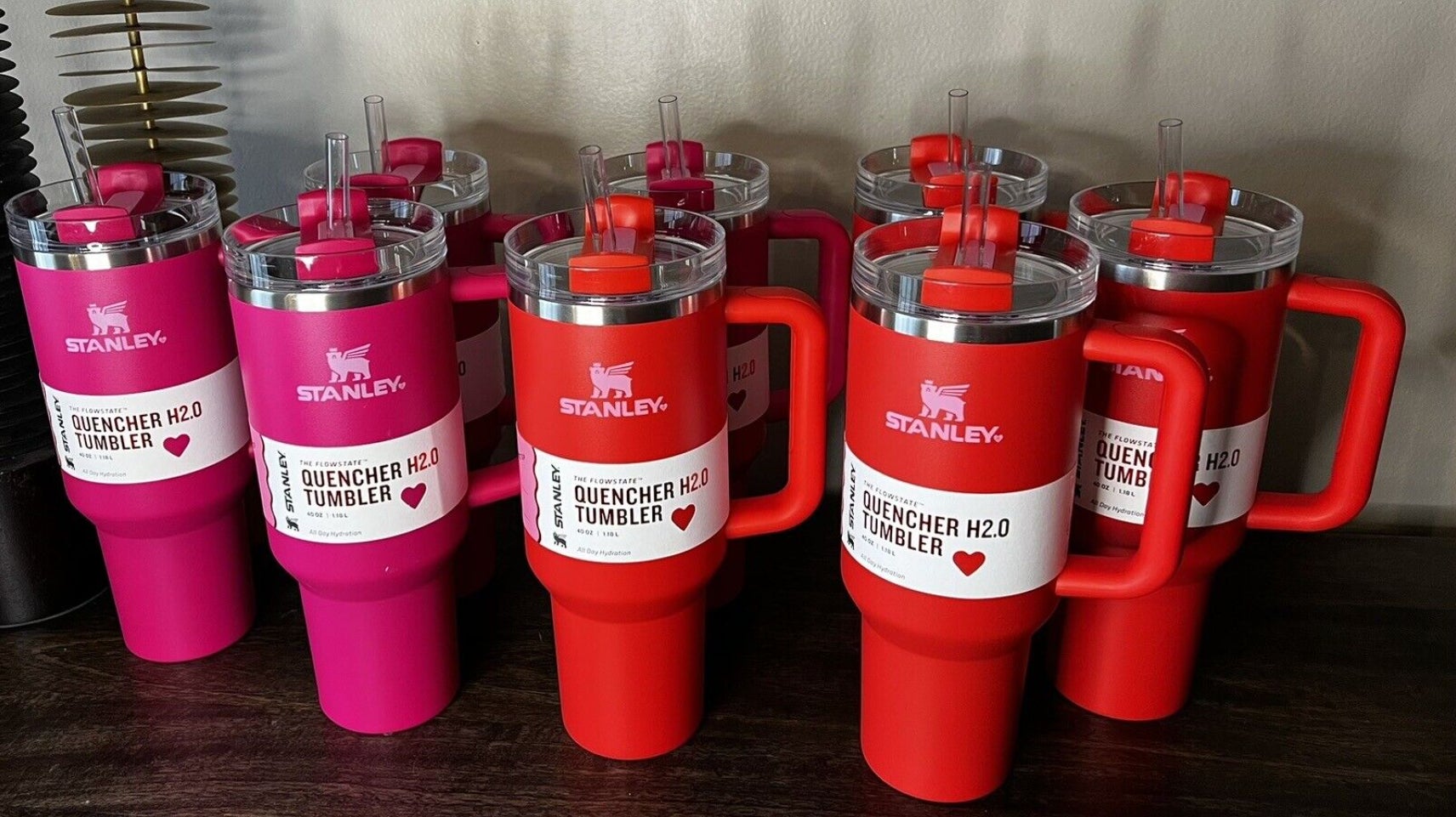These Stanley cups sold out at Target within minutes. Now, they're on eBay at more than double the price
The “Galentine’s Collection” Quencher tumblers have become a craze, thanks to TikTok

Stanley’s limited edition Valentines Day-themed insulated cups have more than doubled their value on the resale market.
Suggested Reading
When the limited-edition cups were stocked at Targets on Dec. 31, customers sprinted and shoved their way to grab one. They flew off the shelves within minutes in some places. A TikTok video even showed an attempted robbery of the new stock of cups. Within days, they were not available for purchase from Target in-store or online. But there is one place they’re still available: the online resale market.
Related Content
The pink and red “Galentine’s Collection” cups, which were originally priced between $20 and $45 depending on size, are going for upwards of $100 on eBay and Mercari, according to dozens of listings seen by Quartz.
“Resellers have moved on from Panda Dunks to Stanley Cups 😂,” online footwear database Kicksfinder joked on X. Over the past few years, Nike’s Dunk Low in a black-and-white colorway the internet referred to as “Panda” gained such immense popularity due to scarcity and collabs that the sneakers started selling for double the retail price. Nike restocked not once, not twice, but four times in 2022, bringing the hype and secondary market prices down.
Stanleys’ crazy prices may be here to stay for now since there have been no announcements about restocking the seasonally-themed insulated tumblers.
The Starbucks X Stanley Winter Pink cup, released yesterday (Jan. 3), is likely to meet the same fate as the previous launch. Shoppers were lining up outside stores at 3am the night before they went on sale, and some stores kept the cups behind counters to prevent hoarding and customer tussles.
A quick recap of the burgeoning Stanley craze
Invented in 1913 by William Stanley Jr, the drinkware design combining vacuum insulation with steel for more effective insulation, was initially made for blue-collar workers. The company’s best-selling product for decades was the classic army green bottle.
“We used to all have big insulated cups like this when I worked in a bodyshop about a decade ago,” one Reddit user wrote in an “Anticonsumption” forum. Another user replied by saying that Stanley cups are “another normal blue collar thing that got lifted by rich idiots and driven expensive by influencers.”
That newfound fame started with the 40-ounce Stanley Quencher, which was released in 2016 and then made popular a few years later. The enthusiasm of a bloggers Linley Hutchinson, Ashlee LeSueur, and Taylor Cannon, who founded The Buy Guide, an online shopping blog and Instagram account, in 2017, supercharged the brand’s image. They even rallied to encourage the brand to restock the product after inventory was exhausted and not renewed in 2019.
Eventually, the company took note and pivoted to embrace a whole new target group: women. Stanley increased the number of colors it offered, releasing the product in a variety of bright and pastel hues.
“We wanted to stay green, male, and hot but also become more colorful, female, and cold,” Stanley global president Terence Reilly told NPR’s Marketplace podcast in February. Before his stint at Stanley, Reilly’s marketing genius made Crocs go from cringe to cool.
The hyped cup is not particularly different from cheaper alternatives. But it’s a fad. Gen Z influencers have championed it not just for its utility and durability—it went viral after one survived a car fire—but also as a fashion accessory.
Stanley and other businesses are fanning the phenomenon with a catalog of accessories for the portable mug. For $10, a Stanley tumbler can be personalized with a name, monogram or graphic. On Etsy and Amazon, third-party sellers offer personalized Stanley name plates, vibrant straw toppers and spill stoppers, silicone boots, straps, and more to keep the cup in place—all of which adds to the insulated cup economy.
Quotable: Stanley Cup is a status symbol
“We’re seeing a lot more accessories become fashion items and status symbols. Now, the water bottle and a kind of athleisure is ascendant, and we need the matching product to boot.”
—Justin Huang, an assistant professor of marketing at the University of Michigan
Stanley Cups, by the digits
$750 million: Stanley Cup’s annual revenue in 2022, more than 10 times the corresponding 2019 figure
>10 million: Quenchers Stanley has sold as of December 2023
20 million: Views “Stanley Cup” amassed on TikTok as of mid-November 2023
47: Stanley cups content creator Chelsea Espejo owns. Like Espejo, some TikTok users boast of having a tumbler to match any outfit or occasion, which, it’s fair to point out, goes against the cup’s touted purpose of furthering the reuse-reduce-recycle sustainability cause